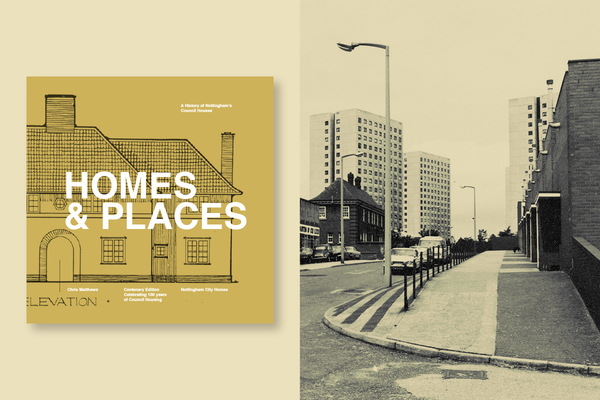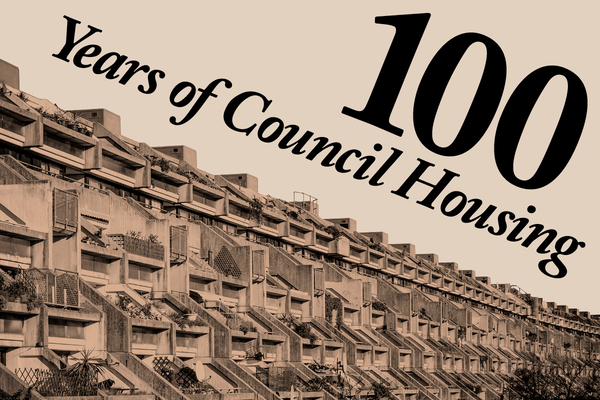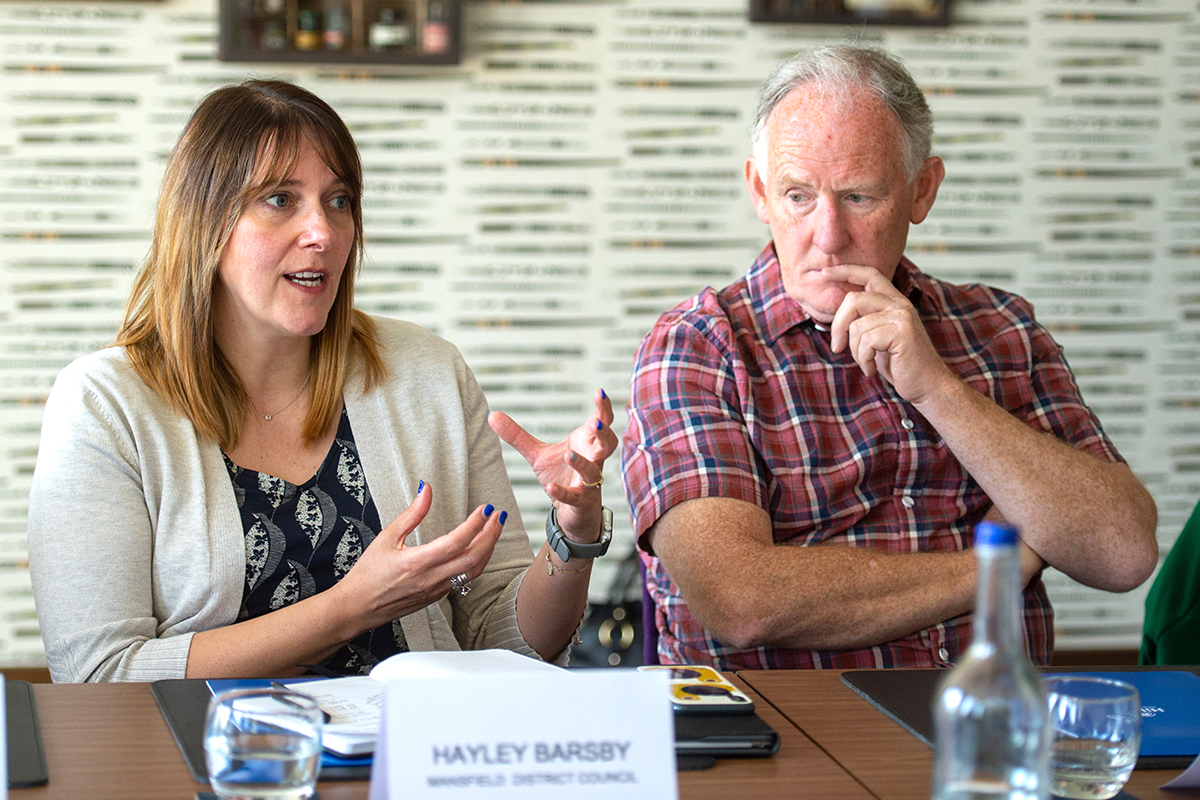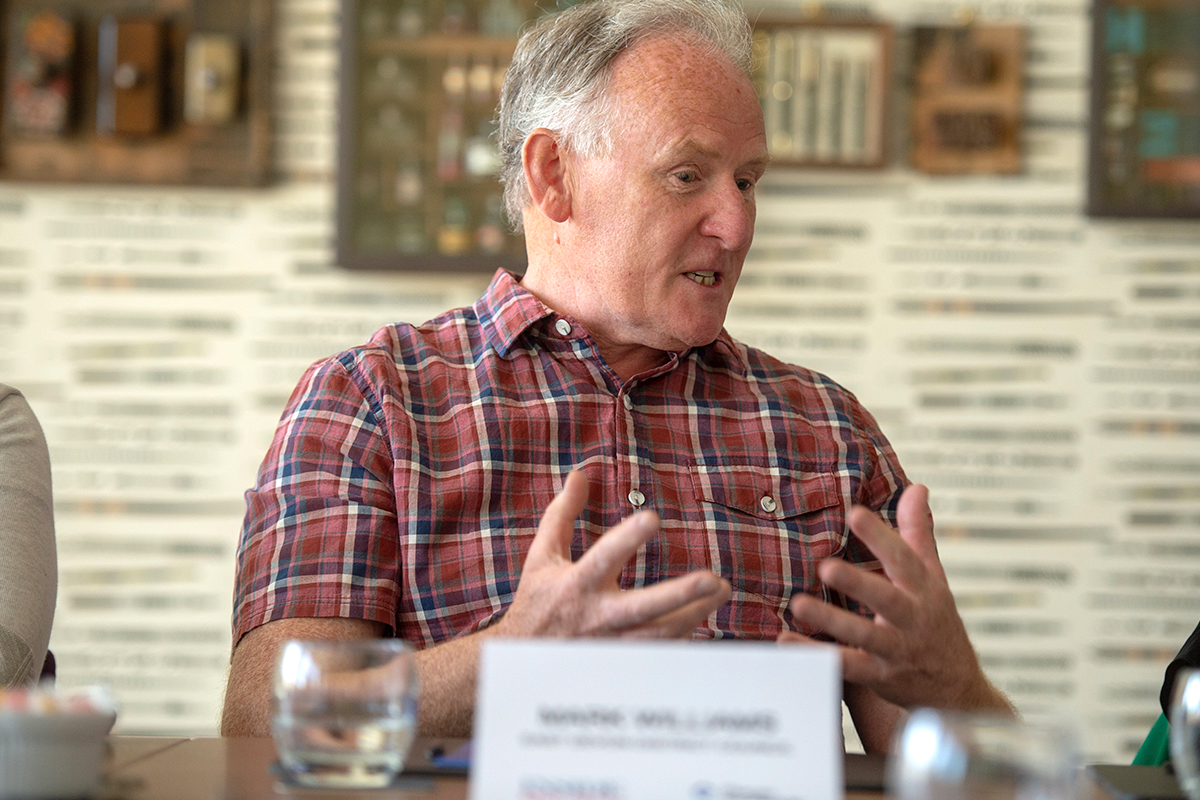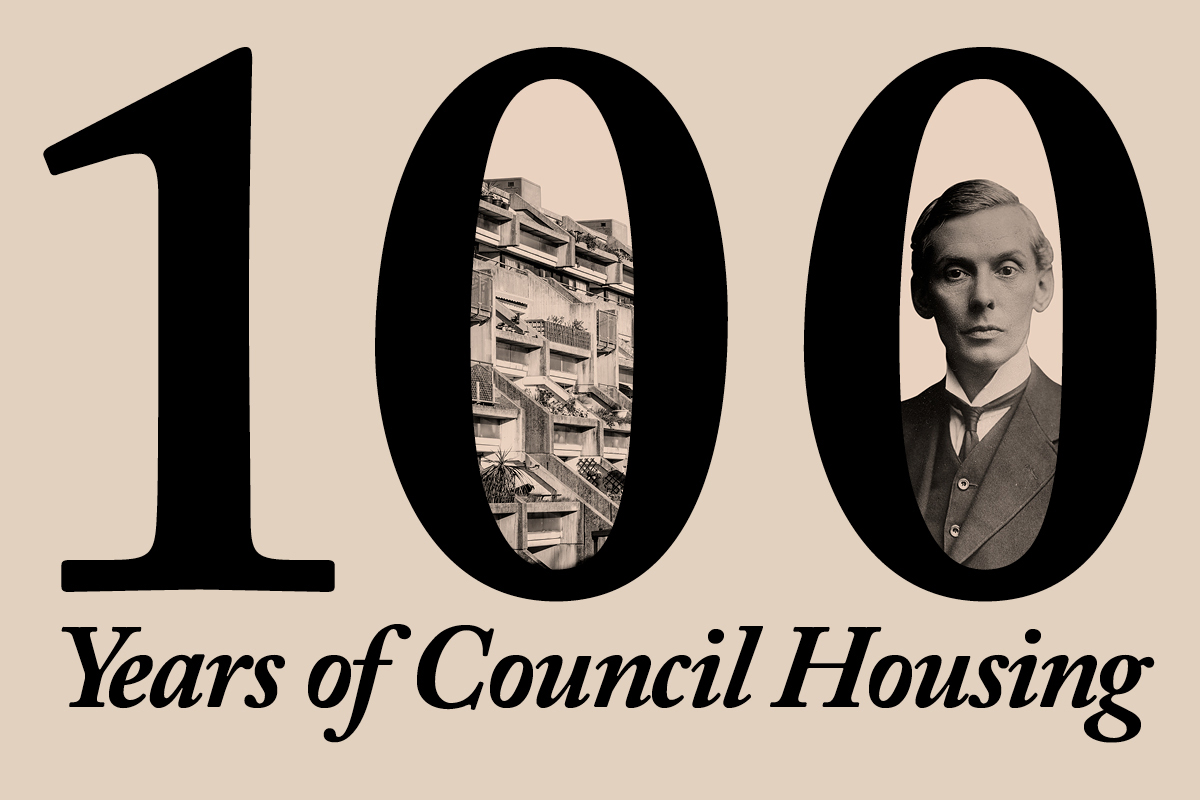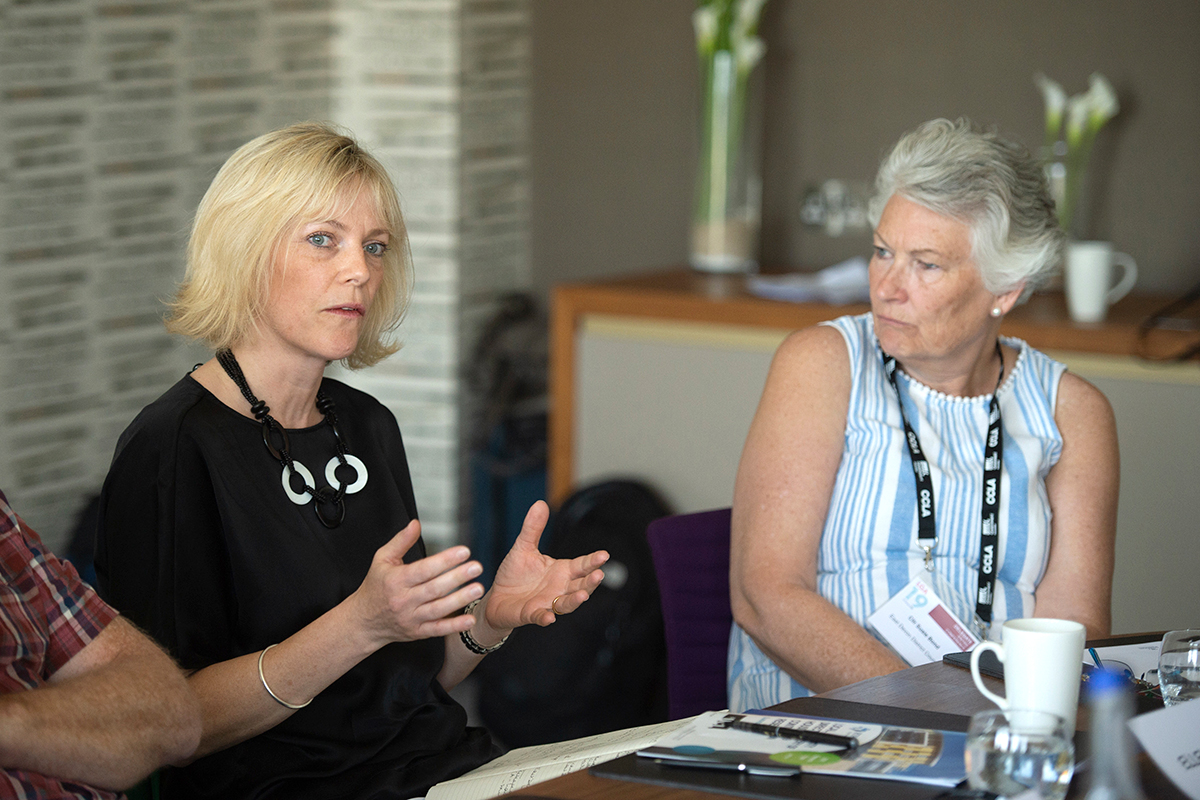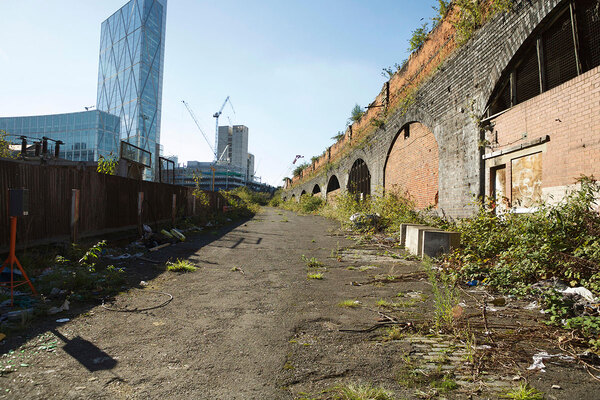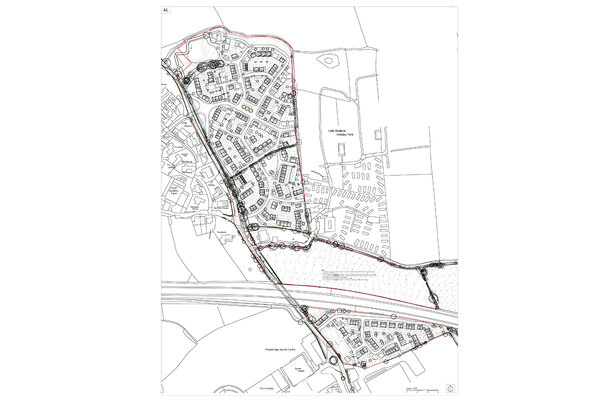What next for council housing?
To celebrate the centenary of the Addison Act, Inside Housing asks a group of housing experts what can be learned from its legacy. Photography by SWNS
In association with:

In response to a post-World War I shortage of housing for the working class in towns, The Housing, Town Planning, Etc Act 1919 – aka the Addison Act – sought to fund councils to build 500,000 houses in three years. It also aimed to rethink the philosophy of council housing, shifting from high-density terraced housing to low-density garden suburbs.
The act is 100 years old this month. To celebrate, Inside Housing hosted a round table debate with Places for People in Bournemouth to evaluate the role councils are planning to play in direct delivery and placemaking moving forward. Given that the UK is now experiencing a housing crisis, what can be learned from the past 100 years and what role do councils need to occupy in the future?
Healthy living
Andrew Lewis, chief executive of Cheshire West and Chester Council, says his council is “building council housing now for the first time in 40 years”. But he says it is important for councils to see housing as one part of the bigger picture. “The key is not just to build good quality but to see housing integrated with other objectives and to play our role with other public services,” he says.
The centenary of the Addison Act has certainly come at a time when we’re reconnecting housing with health, suggests Mary Parsons, group executive director for placemaking and regeneration at Places for People, and chair of the Town and Country Planning Association (TCPA).
“It’s not a new idea – it was documented in the Tudor Walters Report in 1918 – but it’s something that the TCPA has been lobbying government for,” she says.
Ellen Vernon is also keen to integrate health issues with housing development. Ms Vernon is programme director for One Public Estate, which provides support and funding to councils to deliver property-focused programmes in collaboration with government. “We’re trying to understand how health can work more strongly with local authorities,” she says. “We don’t see that happening in enough areas.”
Ben Ingham, leader, East Devon District Council and Mary Parsons, group director for placemaking and regeneration, Places for People
However, this comes with its own issues, as Hayley Barsby, chief executive of Mansfield District Council, explains: “Our council has tended to build extra-care schemes and family housing, which have aided the regeneration of the area. This feels right, but the problem is that we have a high proportion of Band A council tax residents [the lowest band] so we are adding to the support requirements of the community, which means we need to have enough Band C and above residents to help pay for services that they’re not using.”
Mark Williams, chief executive of East Devon District Council, suggests that maybe it is about asking what the role of the state is in providing people with housing. He says that when building the new Cranbrook community, it was the first time that health support was evaluated.
“We gained funding from the Healthy New Towns designation,” says Mr Williams. “Wearing that ‘badge’ has been the only opportunity we’ve had to get the issue of health integrated into a development as it’s been built – getting to ask, ‘Do we need a new doctor’s surgery or dentist? Is the hospital big enough?’”
Jonathan Turner, partner at solicitor Bevan Brittan, says his business has strong relationships with the NHS, local authorities and housing associations: “We try to bring these sectors together to underpin the delivery of big developments.”
Hayley Barsby, chief executive, Mansfield District Council and Mark Williams, chief executive, East Devon District Council
In 1919, the homes were built for the heroes of the war. Who are the councils’ customers now?
Trevor Scott, chief executive of Wealden District Council, says that local authorities hold a good position in providing housing because they understand the demographic of their community.
He adds that this is different to the approach of a house builder, “who might have a product that they replicate 10 times around the country because it’s a profitable model”.
He says that the number of retired people in his area presents a challenge for the type of product the council offers – particularly from the perspective of social care when people want to stay in their own home.
Mary Parsons, group director for placemaking and regeneration, Places for People, Andrew Lewis, chief executive, Cheshire West and Chester Council, Dr Alison Knight, executive director of neighbourhoods, Sandwell Council and Jonathan Turner, partner, Bevan Brittan
“This demographic is often locked into five-bedroom detached houses that are too big for them,” says Mr Scott. “But if there’s not the right housing that has good support and a sustainable location for them to move into, they end up staying in their original properties. Then developers imagine there’s a need for five-bedroom detached houses, so they build more. The council can break that cycle and make products that meet the needs of the community.”
Ms Barsby agrees: “We are living longer but not necessarily living well. It comes back to the question of whether social housing is about more than housing. The council’s role is to provide environments in which communities and individuals can thrive. Social housing is about helping those who are vulnerable. That’s why it was better 100 years ago – the Homes for Heroes initiative was about a richer offer for quality of life.
“Local authorities are the leaders of placemaking and what’s needed in different parts of the country is different – whereas the government wants a single-fit solution.
“The richer offer of support and tenancy management is no longer available. We’re not just giving people a set of keys and hoping they’ll have a sustainable tenancy, which is why we’re seeing more vulnerable groups, anti-social behaviour and more rough sleeping, which has a wider impact on the community.”
Mark Williams, chief executive, East Devon District Council
Mr Lewis argues: “We need a new vision for the role that councils will play in housing for the next 100 years. Homes for Heroes was a big national push, then we reverted to the residualisation of housing and the Right to Buy scheme. There was a sense that housing was something you didn’t spend too much time on if you were a successful council.
“However, I would suggest there can be a third phase – maybe an approach that is more local and individual authorities have the freedom to take a long-term, more patient approach to building communities; one that is integrated across the private sector and embedded in the local infrastructure.
“If there was devolution of government responsibility and the Right to Buy scheme, local authorities would be accountable for how they manage their housing stock, and I think this would be best.”
Time to collaborate
If 2019 is a significant year for housing, the government needs to help with some of the issues local authorities are experiencing. There has already been a massive change in approach, Mr Lewis states.
“The government is now encouraging building and removing the cap on the use of the Housing Revenue Account has helped investment in housing,” he adds.
Dr Alison Knight, executive director of neighbourhoods, Sandwell Council
Dr Alison Knight, executive director of neighbourhoods at Sandwell Council, argues one of the issues is local authorities, developers and housing associations competing for the same land. “This pushes up the price. Then it’s not viable to build affordable housing.”
Mr Scott adds: “If the expectation is that councils are a delivery gig and should deliver 300,000 houses a year, we are not well placed. We will make a difference but not at the scale that is going to be recognised by government.
“We can’t be in a position where we’re bidding against housing associations or registered providers [RPs] because we can’t afford the sites at a rate that’s financially advantageous to us.
“My worry is that in five years’ time the government will say to local authorities that they were given the chance to build, and they haven’t, so they’ve failed.”
100 Years of Council Housing: we want to hear from you
To mark the 100th anniversary of the act receiving Royal Assent in July, we have a month of special activities planned, including interviews with senior council housing figures, exclusive debate and comment, and investigations into what local authorities, past and present, are doing to help provide housing.
This will signal the start of a stronger focus on local authority housing issues over the coming months on www.insidehousing.co.uk and in our weekly print and digital editions.
We want to hear from you about your local authority is doing to mark the Addison Act and about the housing issues in your area, email: editorial@insidehousing.co.uk
Sign up to receive the latest housing news straight to your inbox through our exclusive Council Focus bulletin
If you are already a subscriber click here to manage your newsletter sign-ups
Click here to read more about our activity to mark the Addison Act
Ms Parsons tells of a housing association she has heard about that had been progressing the purchase of a site for a year when they discovered another association had gazumped them. This is unhealthy, she says.
“There is so much we have to deliver that housing associations should be having conversations with councils and agreeing on where you want the homes and what kind of homes. We need to
collaborate and not compete.”
Ken Lyon, assistant chief executive (housing delivery), South Kesteven District Council
That’s the aim of South Kesteven District Council. Ken Lyon, assistant chief executive (housing delivery), says: “We’re trying to turn the conversation around with RPs and to collaborate because we’re all aiming for the same outcome. We have big growth ambitions over the next 15 years and housing is the centrepiece of that. Our target is to build 14,000 homes over that time, which will be 25% growth in the district. I think the role of councils is to do what the market isn’t doing already.”
“I agree with Ms Parsons – it’s vital to collaborate,” says Mr Turner. “For a council, this doesn’t have to be a house builder – I think there’s a more natural partner in the housing association sector.
“An example of the kind of thought that a council can bring is a joint venture between Brighton & Hove Council and Hyde – the council only allowed residents who work locally to apply to rent in the new build, not those who commute into London. A house builder wouldn’t have done that. Some of the future of social housing has to be based on aligning values and goals with the right partner.”
Ellen Vernon, programme director, One Public Estate and Susie Bond, deputy leader, East Devon District Council
Community trust
The government says that building large quantities of houses is what’s needed. But the round table’s chair, Inside Housing editor Martin Hilditch, asks how this can be done without disrupting the present communities.
“This is certainly a debate we’re having,” says Dr Knight. “Sandwell Council manages 29,000 homes, around 40% of which are high rise. The area needs about 13,000 new homes overall, but we want to avoid building more high-density, high-rise blocks, for the health of residents and the surrounding area.”
Mr Lyon says part of the role of a local authority is engagement with the community: “Existing communities have an instinctive negative reaction that is reinforced if the quality of the provision isn’t good enough. Whereas if we build quality estates and they work, it starts to break down some of the barriers and that’s necessary for us to move forward.”
Mr Scott comments that trust in the council has certainly helped, saying that local communities are asking the council to buy sites from developers because “they trust that we will spend more on the quality of the end product”.
“Councils have a trust that the private sector doesn’t,” he concludes.
More on the Addison Act
How George Clarke is aiming to end the housing crisis with his new TV show Architect George Clarke has long been a passionate campaigner for more – and better – council housing. As Inside Housing celebrates 100 years of the Addison Act, Martin Hilditch meets a man on a mission
100 Years of Council Housing: your tweets from week three Our favourite #100yearsofcouncilhousing tweets from the past seven days as our Addison Act activity moves into its fourth week
Nottingham's new wave Robyn Wilson goes to Nottingham to see what the next generation of council homes are set to look like.
If we’re going to have another 100 years of council housing, Right to Buy has to go The Right to Buy is having a devastating effect on the availability of council housing in this country and must be scrapped, writes Lee Sugden
What next for council housing? To celebrate the centenary of the Addison Act, Inside Housing asks a group of housing experts what can be learned from its legacy (sponsored)
Thatcher's legacy: a brief history of the Right to Buy An engine for social change or a handbrake on council development? We look at why the Right to Buy is as divisive as ever #ukhousing
A history of council housing: a timeline From the Addison Act to prefabs, slum clearance and the Right to Buy, council housing in the United Kingdom has a long and colourful history. Carl Brown looks at how it has evolved over time
Council housing: the key to a more equitable and dynamic society As the 100th anniversary of the Addison Act approaches, we publish an abridged extract of a book by Chris Matthews chronicling the history of council housing in Nottingham
Addison’s framework was scrapped but its legacy is more important than ever The fortunes of council housing have ebbed and flowed ever since Addison’s programme was abruptly halted in 1921, writes Jules Birch
Hulme: the redevelopment project that changed regeneration The redevelopment of Hulme in Manchester kick-started a new approach to regeneration in the UK – and the careers of some of housing’s best-known figures. Martin Hilditch joins them on a step back in time with lessons for today.
100 Years of Council Housing: your tweets from week two We pick our favourite #100yearsofcouncil housing tweets over the past week
Memories of council housing: the human legacy of the Addison Act As the centenary of the first council houses approaches, Peter Apps hears from some of the people who have lived in them in the decades since
Many of the sector’s current leaders began their journeys in council teams One hundred years of council housing has delivered a generation of sector leaders as well as millions of council homes, writes Mervyn Jones
Stevenage: home of the new town revolution Stevenage was the first of the post-war ‘new towns’. Gavriel Hollander visits the town to see how it has changed.
100 Years of Council Housing: your tweets from week one Inside Housing has been encouraging councils to say what they are doing to build homes and to mark 100 years of council housing. Here we feature a selection of your tweets
Kit Malthouse: 'Council housing is coming back with a vengeance' Housing minister Kit Malthouse tells Martin Hilditch why growing numbers of councils are looking to get back into development
Sea Mills: we visit one of the first estates to benefit from the Addison Act Social historian John Boughton visits a place in Bristol still cherished today
The Housing Podcast: is council housebuilding about to make a comeback Nearly 100 years after the introduction of the Addison Act, which kick-started the building of the first council estates in the UK, the Housing Podcast team examines the state of council housebuilding today
Why the 100th anniversary of the Addison Act should spark a council housing comeback Let’s make 2019 the start of a renaissance of council housing, writes Martin Hilditch
Are new borrowing freedoms sparking a revival of council housebuilding? The Addison Act marked the birth of council housebuilding. A century later, could recent financial freedom spark a renaissance? Nathaniel Barker investigates.
How Cornwall is taking inspiration from Christopher Addison Cornwall Council is one of many keeping the legacy alive, writes Kate Kennally.
The Addison Act - celebrating 100 years of council housing This year marks the 100th anniversary of the Addison Act – which paved the way for council housebuilding on a large scale. Inside Housing has a whole month of special activity planned and we want to hear your stories
The 100-year anniversary of the Addison Act means it’s time to talk about council housing Let’s use the 100th anniversary of council housing as we know it to flag up some of the great work that’s been done – and kick-start a conversation about the future, writes Martin Hilditch
London must recapture the housebuilding ambition of the Addison Act Councils are committed to development but are still facing unfair restrictions, writes Darren Rodwell of London Councils
Marking 100 years since the ‘Addison Act’ Professor Mark Swenarton writes about the Homes Fit for Heroes Centenary Conference
100 Years of Council Housing: what Inside Housing is doing
One hundred years ago, a piece of legislation led to the birth of council housing. Gavriel Hollander introduces Inside Housing’s celebration of the centenary of the Addison Act.
It is so ingrained in our national consciousness that it is hard to imagine just how radical the idea of local authority built and funded housing must have seemed a century ago. Before World War I, almost all housing in the UK was built by private developers (albeit with some notable municipal exceptions in major cities). Given this, it is unsurprising that both quality and consistency of delivery were variable.
The post-war introduction of subsidies for councils to solve the blight of slum estates was supposed to right a wrong and – in the words of then-prime minister David Lloyd George – provide “homes fit for heroes”.
The so-called Addison Act – the very first housing act passed in this country, named after its sponsor Dr (later Lord) Christopher Addison – received royal assent exactly 100 years ago this month.
It may never have achieved its aspiration of delivering 500,000 homes (something that may sound familiar to modern-day watchers of government housing policy) but it was the start of a movement.
New estates began to crop up across the country, built in accordance with recommendations from the Tudor Walters Report, which was produced to parliament in November 1918. This built on the ‘Garden City Principles’ and suggested a number of improvements to the standard of public housing. These included limiting the length of terraced-housing blocks, mandating a minimum number of rooms and providing indoor bathrooms.
“The post-war introduction of subsidies for councils to solve the blight of slum estates was supposed to right a wrong and – in the words of the prime minister David Lloyd George – provide ‘homes fit for heroes’”
Although the abandonment of subsidy in 1921 and a change of government the following year curtailed the immediate growth of council-built housing, the seed had been sown.
This month Inside Housing celebrates the centenary of the Addison Act with a month-long series of articles looking at how it transformed the social fabric of the country and created the housing sector we know today.
Over the course of this month, we visit four estates, each symbolising a different era of council housebuilding. We also take a look at whether new-found financial freedom for local authorities could be the catalyst for a new generation of estates.
To kick off the series, acclaimed social historian John Boughton visits one of the first estates made possible by Lord Addison’s historic legislation: Sea Mills in Bristol. We then travel to Stevenage to look at how the damage to Britain’s inner cities during the Blitz led to the new town movement and a fresh wave of estates through the 1950s and 1960s.
Martin Hilditch, editor of Inside Housing, takes a trip to Hulme in Manchester to examine how the private and public sector had to work together in the 1980s to deliver a regeneration project, which is still thriving more than 30 years later.
Finally, we go to Nottingham and look at one council with grand ambitions to provide housing to a new generation of tenants.
There may still be myriad challenges to face when it comes to providing good-quality, genuinely affordable housing for those most in need, but without the passing of an act of parliament 100 years ago, the sector we work in today may never have come to exist. That alone is worth celebrating.
To read more about the act, go to: www.insidehousing.co.uk/AddisonAct
Participants
Hayley Barsby
Chief executive, Mansfield District Council
Susie Bond
Deputy leader, East Devon District Council
Martin Hilditch
Editor, Inside Housing
Ben Ingham
Leader, East Devon District Council
Dr Alison Knight
Executive director of neighbourhoods, Sandwell Council
Andrew Lewis
Chief executive, Cheshire West and Chester Council
Ken Lyon
Assistant chief executive (housing delivery), South Kesteven District Council
Mary Parsons
Group director for placemaking and regeneration, Places for People
Trevor Scott
Chief executive, Wealden District Council
Jonathan Turner
Partner, Bevan Brittan
Ellen Vernon
Programme director, One Public Estate
Mark Williams
Chief executive, East Devon District Council

